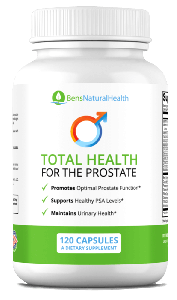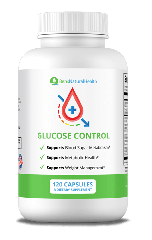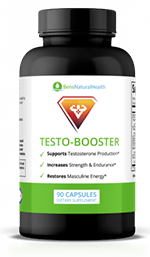If you’ve been wondering whether physical activity could ease the symptoms of prostatitis, you’re not alone. For over half a century, numerous studies have demonstrated how regular exercise can help lower the risk of stroke, heart disease, and certain types of cancer, including prostate cancer. It can also alleviate stiffness and joint pain linked to chronic conditions like arthritis.
But have you ever considered exercise specifically for prostatitis? We spoke with Dr. Letsa, who has provided extensive research and resources on prostatitis exercises, to explore how targeted physical activities might influence prostate health and pain management.
In this interview-style guide, you’ll find scientifically backed insights and practical tips, all thoroughly reviewed by a medical doctor to ensure accuracy and reliability.
Let’s dive in and hear directly from Dr. Letsa on how exercise can help manage prostatitis.
Q: How Can Exercise Help Prostatitis?
Dr. Letsa answers: Prostatitis is a more prevalent urologic disorder than people often realize. As the research shows, the overall prevalence of chronic prostatitis is roughly 4.5% to 9%, and recurrence rates can spike up to 50% in older individuals.
Regular moderate-intensity physical activity serves as an evidence-supported adjunct in the treatment of CP/CPPS. It promotes pelvic blood flow, supports neuroimmune modulation, aids in neuromuscular retraining, and helps mitigate psychological stressors—such as anxiety, irritability, and depression—that are commonly present in patients with this chronic pain syndrome.
A good example is a randomized, double-blind study involving 231 male patients (aged 20 to 50) with chronic pelvic pain syndrome/chronic prostatitis who hadn’t responded to conventional treatment. These patients tried moderate-intensity exercise, and we saw that improvement in symptoms was significantly superior in the aerobic exercise group compared to those who only did placebo stretching. Not only did they manage better pain control, but their overall quality of life improved as well.
This shows that aerobic exercise, in particular, can be a valid treatment option for symptoms such as chronic pelvic pain.
Get Your FREE PSA Lowering Diet Plan!
- Naturally lower PSA levels
- Reduce nighttime trips to the bathroom
- Enjoy better bladder control and urine flow
Q: Is There Scientific Evidence Supporting Exercise for Prostatitis?
Dr. Letsa answers: Yes, there is growing evidence that exercise can alleviate prostatitis symptoms. Emerging clinical research supports the role of structured aerobic exercise as a beneficial adjunctive therapy for men with CP/CPPS. While high-certainty evidence is lacking, findings suggest that physical activity can contribute to modest yet meaningful improvements in pain, urinary function, and psychological well-being.
Q: What Are the 6 Exercises That Are Good for Prostatitis?
Dr. Letsa answers: The prostate can sometimes feel like a thorn in your side. Prostatitis patients often experience a range of symptoms, including lower urinary tract issues such as urinary dribbling, nocturia (frequent nighttime urination), and poor urine flow. But prostatitis can also come with rectal pain, chronic pelvic pain, constipation, external genital pain, burning sensations, lower back pain, erectile dysfunction, and even premature ejaculation.
With a chronic condition like nonbacterial prostatitis or chronic bacterial prostatitis, quality of life can drop quickly. That’s why the right exercises can make a practical difference. Below are six exercises I often recommend to help manage prostatitis.
1. Kegel Exercises to Train and Fortify the Pelvic Floor
Effective, with caution. Kegel exercises are useful in men who have weakened pelvic floor muscles, particularly for improving urinary control. However, they may be counterproductive in men with pelvic floor muscle overactivity (i.e., hypertonicity), a common finding in CP/CPPS. A professional pelvic floor assessment is recommended before initiating Kegels to ensure they are appropriate for the patient’s muscle tone.
2. Aerobic Workouts to Help Stool, Digestion, and Metabolism
Strongly supported. Regular aerobic activities—such as walking, light cycling, or swimming—have shown benefit in reducing symptoms of CP/CPPS. These exercises support circulation, improve general health, and contribute to emotional regulation, which can indirectly reduce symptom burden.
3. Yoga to Get Your Mental Health in Check
Increasingly supported by evidence. Yoga has demonstrated benefit in managing chronic pelvic pain and comorbid anxiety or depression. It can help lengthen shortened pelvic muscles, reduce muscular guarding, and promote vagal tone, thus lowering pain sensitivity.
4. Moderate Calisthenics to Target Muscle Weakness
Safe when properly performed. Bodyweight exercises like planks, lunges, and squats can improve core and pelvic stability. However, patients should avoid straining or performing breath-holding maneuvers (Valsalva), particularly during symptom flares.
5. Coordination Exercises to Work on Your Balance
Not directly studied in prostatitis but recommended as supportive. Exercises to improve coordination and balance may contribute to better pelvic alignment and neuromuscular function. They are particularly beneficial for patients with poor posture or compensatory movement patterns due to chronic pain.
6. Pelvic Floor Physical Therapy to Restore Pelvic Floor Function
First-line and evidence-based. PFPT is widely recommended by both AUA and EAU guidelines for men with CP/CPPS and confirmed pelvic floor dysfunction. Techniques such as trigger point release, biofeedback, and myofascial relaxation have shown measurable symptom reduction and improved function in clinical trials.
Key FAQs on Prostatitis Exercises
Q: Can dietary changes enhance the effects of exercise for prostatitis?
Dr. Letsa answers: Yes. Anti-inflammatory diets—especially Mediterranean-style eating patterns rich in omega-3 fatty acids, fruits, vegetables, and whole grains—can complement exercise by reducing systemic inflammation. Patients should be encouraged to track dietary patterns in relation to symptom flares using a food-symptom journal.
Q: How soon can I expect to notice improvements in my prostatitis symptoms once I start exercising?
Dr. Letsa answers: According to observational studies, most patients begin noticing improvements within 6 to 12 weeks of initiating consistent exercise. Some report earlier benefits (2–4 weeks), which may reflect improved mood, sleep, and general conditioning.
Q: Can I combine multiple prostate exercise types (like Kegels and yoga) in one routine?
Dr. Letsa answers: Yes, combining different types of exercises can be highly beneficial. A multimodal exercise approach is optimal. Combining aerobic workouts with pelvic floor therapy, stretching/yoga, and light strength training provides the most balanced support for CP/CPPS.
Q: Should I consult a specialist before starting a new prostate exercise program?
Dr. Letsa answers: Strongly recommended. A referral to a pelvic floor physical therapist or a urologist trained in CP/CPPS management is essential to tailor the plan based on the patient’s functional status and pelvic floor tone (hypotonic vs. hypertonic).
Q: Are there any specific warning signs to watch out for when starting an exercise program for prostatitis?
Dr. Letsa answers: A balanced exercise routine that incorporates at least 30 minutes of physical activity on most days of the week provides significant health benefits. While exercise is generally safe, certain warning signs should not be ignored. These include increased pain, urinary retention, or blood in the urine. If you experience these symptoms, stop exercising and consult your healthcare provider immediately.
Q: Are squats bad for prostatitis?
Dr. Letsa answers: Not inherently. Squats, when performed with good form, can strengthen the lower body and pelvic musculature. However, deep or weighted squats may exacerbate symptoms during active flares. Emphasize bodyweight-only movements with controlled breathing and neutral spine alignment.
Conclusion
Exercise is a clinically supported, non-pharmacological modality that can meaningfully reduce symptom burden in patients with CP/CPPS. While not a standalone cure, it plays an essential role in multimodal management.
Whether it’s Kegels, aerobic workouts, yoga, calisthenics, balance prostate exercises, or a structured pelvic floor physical therapy program, movement can help you reclaim some control over your health. Always remember to discuss your exercise plans with a healthcare professional, especially if you have underlying conditions or concerns.
Exercise should be regarded as a core component in the management of chronic prostatitis/chronic pelvic pain syndrome. Its efficacy is maximized when integrated with pelvic floor physical therapy, psychosocial support (e.g., cognitive behavioral therapy), and individualized medical treatment. Clinicians are encouraged to monitor progress using validated symptom tools such as the NIH-CPSI to assess response and guide further intervention.
Our Medical Review Process
At Ben’s Natural Health, we prioritize transparency, accuracy, and scientific integrity. Every article is meticulously developed by medical professionals and undergoes a thorough review every 12 to 24 months. This ensures that our content remains accurate, up-to-date, and rooted in credible, evidence-based research. We rely solely on peer-reviewed studies from reputable medical journals, providing full citations and direct links to enhance trust and confidence. Learn more about our rigorous medical review process and research standards.
Our Editorial Guidelines
For over 25 years, Ben’s Natural Health has been a trusted source of scientifically backed information on natural health. Our editorial guidelines uphold the highest standards of quality and integrity. Each article is authored by qualified professionals—including doctors, dietitians, nutritionists, fitness experts, and surgeons—and undergoes independent quality checks. We believe in full transparency, displaying the credentials and biographies of our contributors at the beginning of every article. Read our editorial guidelines to understand how we create, review, and fact-check our content.
Medical Disclaimer
The information provided on this blog is for educational purposes only and should not be considered a substitute for professional medical advice, diagnosis, or treatment. While our content is written and reviewed by licensed medical professionals, it may not address your specific health concerns. Always consult your physician or a qualified healthcare provider before making any health-related decisions. Never ignore or delay seeking professional medical advice based on information found here. Your use of this blog and its content is entirely at your own discretion and risk.








